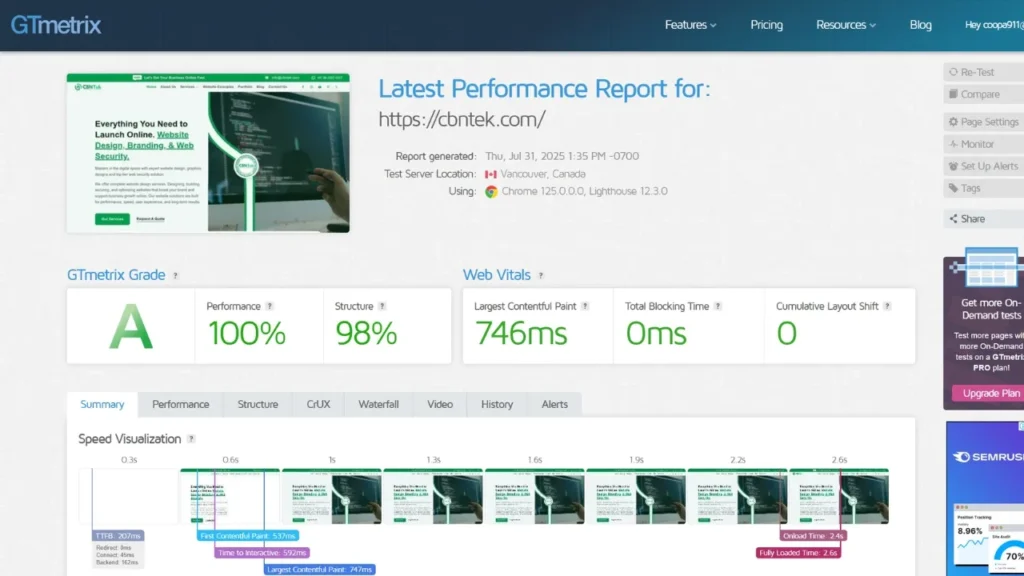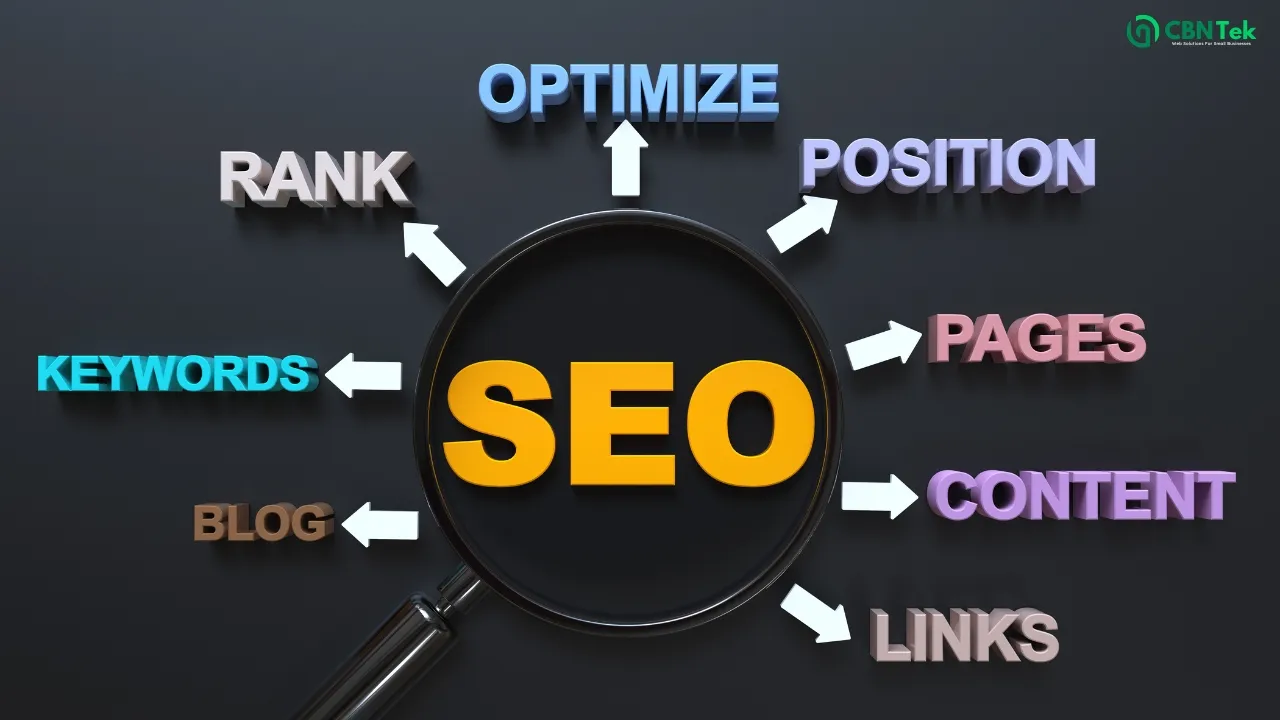
Table of Contents
Building Websites That Actually Convert: The Ultimate Guide to Web Excellence
Your website has exactly 15 seconds to make an impression. That’s it. Fifteen seconds before visitors decide whether you’re worth their time or just another disappointment in their endless scrolls.
I learned this lesson the hard way three years ago when my client’s beautiful $10,000 website generated zero leads in its first month. The design looked stunning in screenshots, but real users? They bounced faster than rubber balls.
That experience taught me something crucial: creating exceptional websites isn’t about following design trends or cramming in every possible feature. It’s about understanding what truly matters to the audiences (target people) who are actually going to be using your site.
Today, I’m sharing the proven framework of what makes a good website that transforms ordinary websites into conversion machines. The same principles that helped that failed site generate over 300 qualified leads within six months of its redesign.
Why Most Websites Fail (And How Yours Won’t)
Here’s the uncomfortable truth: most websites exist in digital purgatory. They’re not terrible enough to embarrass their owners, but they’re nowhere near good enough to drive real business results.
The typical website failure pattern:
- Looks decent on desktop but breaks on mobile
- Takes forever to load (if it loads at all)
- Confuses visitors with cluttered navigation
- Fails to communicate value clearly
- Offers no compelling reason to take action
But outstanding websites do something different. They solve real problems for real people while making the experience feel effortless.
The Foundation: The Design (Design Layout)
Effective web design starts with understanding that your visitors aren’t art critics, they’re people trying to accomplish something specific. Your job is removing every possible barrier between them and their goal.
Color Psychology That Converts
Colors aren’t just decoration but they’re psychological triggers that influence behavior. Smart website owners choose colors strategically, not based on personal preference.
High-converting color strategies:
- Blue builds trust (perfect for financial services, healthcare)
- Green suggests growth and safety (ideal for environmental, wealth-building)
- Orange creates urgency (excellent for calls-to-action, limited offers)
- Black conveys luxury and sophistication (premium brands, high-end services)
Skip the guesswork with tools like Adobe Color or Coolors. These platforms generate professional color schemes that actually work together.
Typography That People Actually Read
Your font choices directly impact whether people consume your content or abandon your site. Here’s what works:
Web-safe fonts like Arial, Helvetica, Poppins, Roboto and Times New Roman ensure consistency across all devices and browsers. Fancy fonts might look creative, but they often fail to load properly or create readability issues.
Font size hierarchy guides readers naturally through your content:
- Headlines: 32-48px
- Subheadings: 24-32px
- Body text: 16-18px
- Captions: 14-16px
Visual Hierarchy That Guides Action
Strategic visual hierarchy tells visitors exactly where to look first, second, and third. This isn’t accidental, it’s a carefully orchestrated strategy.
Proven hierarchy techniques:
- Size and scale to emphasize important elements
- Color contrast to make key information pop
- Whitespace to create breathing room and focus
- Strategic positioning to guide the eye naturally
Look at Neuralink’s and CBN Tek’s website, they’ve mastered visual hierarchy. Your eye naturally flows from their headline to their key benefits to their call-to-action. Nothing feels random or accidental.
Accessibility: Building for Everyone
Website accessibility isn’t just about compliance—it’s about creating inclusive experiences that work for everyone. Plus, accessible design often improves usability for all visitors.
Essential Accessibility Features
| Feature | Purpose | Implementation |
|---|---|---|
| Alt Text | Describes images for screen readers | Brief, descriptive text for every image |
| Proper Headings | Creates logical content structure | H1 for main title, H2-H6 for subsections |
| Video Captions | Makes audio content accessible | Clear, accurate captions for all video content |
| Keyboard Navigation | Allows navigation without a mouse | All interactive elements accessible via keyboard |
Test your accessibility with free tools like WAVE or WebAIM’s evaluator. These catch issues before they become problems.
Functionality That Serves a Purpose
Every website exists for a reason. E-commerce sites sell products. Service businesses generate leads. Blogs build audiences. Successful websites align every element with their core purpose.
Defining Your Website’s Mission
Before designing a single page, answer these questions:
- Who exactly are you trying to reach?
- What specific problem do you solve for them?
- What action do you want visitors to take?
- How will you measure success?
These answers inform every design decision, from color choices to content strategy.
Essential Features Every Modern Website Needs
Compelling headlines that immediately communicate your value. Visitors should understand what you offer within seconds of landing on your page.
Hero sections that combine powerful visuals with clear messaging. This prime real estate must work harder than any other part of your site.
Intuitive navigation that never leaves visitors wondering where to go next. If users need to think about how to navigate your site, you’ve already lost them.
Strategic calls-to-action that guide visitors toward conversion. These aren’t afterthoughts, they’re the culmination of your entire user experience.
SEO That Actually Drives Traffic
Search engine optimization isn’t about gaming algorithms, it’s about creating content that genuinely helps people while making it easy for search engines to understand your content and share it.
SEO Fundamentals That Matter
Keyword research reveals what your audience actually searches for, not what you think they search for. Use tools like SEMrush or Ahrefs to discover the terms that drive qualified traffic.
Technical optimization ensures search engines can crawl and index your content effectively:
- Fast loading speeds (under 3 seconds)
- Mobile-responsive design
- Clean, semantic HTML structure
- Proper internal linking
Content optimization means creating valuable resources that answer real questions your audience asks. This isn’t about keyword stuffing but it’s about genuine helpfulness.
Quality backlinks from reputable sources signal authority to search engines. Focus on earning these through excellent content, not buying them through questionable schemes.

User Experience That Feels Effortless
Outstanding user experience happens when technology gets out of the way and lets people accomplish their goals naturally. The best UX is invisible-users achieve what they came for without thinking about the interface.
Creating Intuitive User Journeys
Study how Amazon guides customers from product discovery to purchase completion. Every element serves a purpose in moving users closer to conversion while eliminating friction.
Key UX principles:
- Reduce cognitive load by simplifying choices and eliminating unnecessary steps
- Provide clear feedback so users always know where they are and what’s happening
- Maintain consistency across all pages and interactions
- Optimize for speed because slow experiences kill conversions
The 15 Characteristics of Websites That Convert
1. Navigation That Never Confuses
Intuitive website navigation keeps visitors engaged instead of frustrated. Every navigation element should feel obvious and helpful.
Essential navigation components:
- Clean header with your most important pages prominently displayed
- Breadcrumb trails that show users their current location
- Smart search functionality for content-heavy sites
- Comprehensive footer with secondary pages and legal information
- Logical site structure that mirrors how users think about your business
2. Speed That Doesn’t Test Patience
Website performance directly impacts both user experience and search rankings. Slow sites don’t just frustrate the users, but they also cost you money.
Speed optimization strategies:
- Image optimization using tools like TinyPNG and To WebP to compress files without quality loss
- Code minification to remove unnecessary characters and whitespace
- Content delivery networks (CDNs) to serve content from servers closer to users
- Browser caching to store frequently accessed resources locally
Test your speed regularly with GTmetrix or Google PageSpeed Insights. Aim for load times under 3 seconds on all devices.
3. Mobile Experience That Actually Works
Responsive web design isn’t optional anymore, it’s fundamental. Over 60% of web traffic comes from mobile devices, and that percentage keeps growing.
Mobile optimization essentials:
- Touch-friendly interfaces with properly sized buttons and links
- Readable text without requiring zooming
- Fast loading even on slower mobile connections
- Simplified navigation that works with thumbs, not mouse cursors
4. Security That Builds Trust
Website security protects both your business and your visitors’ data. Security breaches destroy trust and can have devastating financial consequences.
Critical security measures:
- SSL certificates to encrypt data transmission (that padlock icon matters)
- Regular security audits using tools like Sucuri or Qualys
- Strong password policies and two-factor authentication
- Updated software across your entire technology stack
5. Search Engine Visibility
SEO-optimized websites attract qualified traffic from people actively searching for solutions you provide. This isn’t about tricks but about making your valuable content discoverable.
6. Structured Data Implementation
Schema markup helps search engines understand your content context, potentially leading to rich snippets in search results. When a recipe site includes structured data, Google can display cooking time, ratings, and ingredients directly in search results.
7. Streamlined Conversion Processes
Optimized checkout processes remove friction from the customer journey. Every additional step or required field reduces completion rates.
Conversion optimization principles:
- Minimize required fields to only essential information
- Display costs clearly with no hidden fees or surprises
- Provide multiple payment options to accommodate different preferences
- Offer guest checkout options for first-time customers
- Include security badges to build trust during sensitive transactions
8. Fresh, Relevant Content
Regular content updates signal to both users and search engines that your site remains active and valuable. Stale content suggests neglect.
Content maintenance strategies:
- Regular audits to identify outdated information
- Seasonal updates to keep content current and relevant
- Performance monitoring to see which content drives results
- User feedback integration to address real questions and concerns
9. Clear Value Communication
Compelling value propositions immediately communicate why visitors should choose you over competitors. This isn’t about being clever, it’s about being clear with the value you offer.
Asana’s homepage perfectly demonstrates this principle. Their hero section immediately explains how they help teams organize work, supported by clean visuals and straightforward copy.
10. Copy That Connects and Converts
Effective website copywriting speaks directly to your audience’s needs, desires, and pain points. Great copy feels like a conversation with a knowledgeable friend.
High-converting copy characteristics:
- Audience-focused language that addresses specific problems
- Clear, jargon-free communication that anyone can understand
- Compelling calls-to-action that inspire immediate action
- Error-free presentation that maintains professional credibility
Use tools like Grammarly to catch errors and improve clarity, but don’t let technology replace human judgment about what resonates with your audience.
11. Content That Provides Real Value
Valuable website content educates, entertains, or solves problems for your audience. It’s not about you but it’s about them.
Content strategy approaches:
- Educational blog posts that answer common questions
- Visual content like infographics that simplify complex information
- Resource libraries with downloadable tools and guides
- Interactive content like webinars or calculators
12. Calls-to-Action That Drive Results
Strategic CTAs guide visitors toward conversion without feeling pushy or manipulative. The best calls-to-action feel like helpful suggestions.
High-performing CTA characteristics:
- Visually prominent using contrasting colors and strategic placement
- Action-oriented language that creates urgency without desperation
- Benefit-focused messaging that explains what users gain
- Strategic positioning at natural decision points in the user journey
Hostinger’s “Claim Deal” buttons exemplify effective CTA design, bright colors, urgent language, and clear benefits.
13. Professional Visual Assets
High-quality visuals enhance your message instead of distracting from it. Generic stock photos scream “amateur,” while original, relevant imagery builds credibility.
Visual content best practices:
- Original photography that reflects your actual business
- Consistent styling across all visual elements
- Optimized file sizes that don’t slow down loading
- Strategic placement that supports rather than competes with your message
14. Engagement Tracking and Optimization
Analytics implementation provides insights into how visitors actually use your site, not how you think they use it. Data drives smart optimization decisions.
Google Analytics reveals user behavior patterns. Which pages keep people engaged, where they typically exit, and what paths lead to conversions. Use this information to continuously improve performance.
15. Lead Generation That Qualifies Prospects
Effective lead capture identifies genuinely interested prospects instead of collecting random email addresses. Quality always beats quantity.
Lead generation optimization:
- Strategic form placement at high-intent moments
- Valuable lead magnets that solve real problems
- Progressive profiling to gather information gradually
- Clear privacy policies that build trust with prospects
Common Website Mistakes That Kill Conversions
I’ve audited hundreds of websites, and the same problems appear repeatedly:
Over-complicated navigation that confuses instead of guides Slow loading speeds that test users’ patience Unclear value propositions that leave visitors wondering what you actually do Mobile experiences that feel like afterthoughts Weak calls-to-action that fail to inspire action
The good news? These problems are entirely fixable with focused attention and strategic thinking.
Your Website Excellence Action Plan
Week 1: Foundation Audit
- Test your site’s loading speed across devices
- Review your navigation from a new user’s perspective
- Ensure your value proposition is immediately clear
- Verify mobile responsiveness on actual devices
Week 2: Content and SEO Review
- Audit all content for accuracy and relevance
- Check for broken links and missing images
- Review SEO basics (title tags, meta descriptions, alt text)
- Analyze your most and least popular pages
Week 3: User Experience Enhancement
- Simplify your conversion processes
- Optimize calls-to-action placement and messaging
- Improve visual hierarchy and readability
- Test forms and interactive elements
Week 4: Performance and Security
- Implement or verify SSL certificates
- Set up comprehensive analytics tracking
- Create backup and security protocols
- Plan ongoing maintenance and updates
Building Websites That Actually Matter
Creating exceptional websites isn’t about following every trend or using the latest technology. It’s about understanding your audience deeply and removing every possible barrier between them and their goals.
The websites that succeed long-term focus relentlessly on user value. They load quickly, communicate clearly, and make taking action feel natural and beneficial.
Your website isn’t a digital business card or an artistic expression, it’s a business tool designed to serve your customers and grow your company. When you approach it with that mindset, everything becomes clearer.
Remember: your website should work harder than your best salesperson, provide better customer service than your most helpful employee, and never take a day off.
The principles we’ve covered aren’t suggestions, but they’re requirements for any serious web presence in 2025. Start with the fundamentals, measure everything, and continuously optimize based on real user behavior rather than assumptions.
Ready to transform your website from digital disappointment to conversion machine? Begin with a honest audit using this framework, then tackle improvements systematically rather than randomly. You can also reach out to CBN Tek if you need help.
What’s the biggest challenge you’re facing with your current website? Share your experience—there’s wisdom in knowing we’re all figuring this out together.

















0 Comments